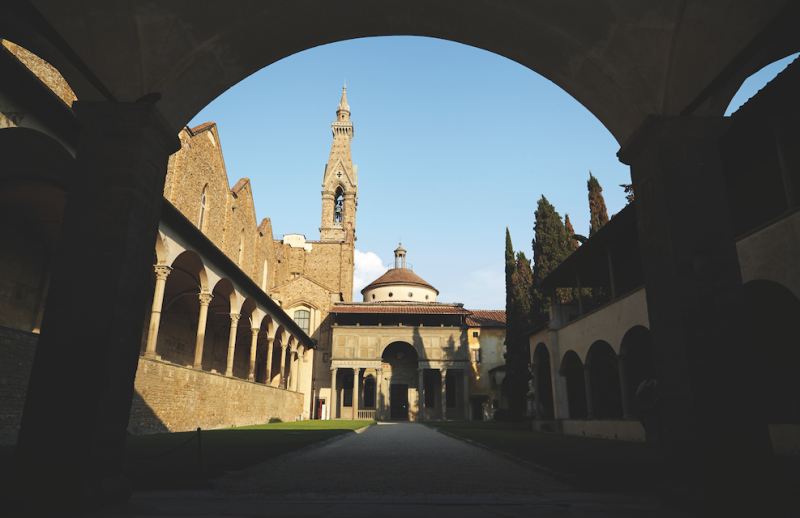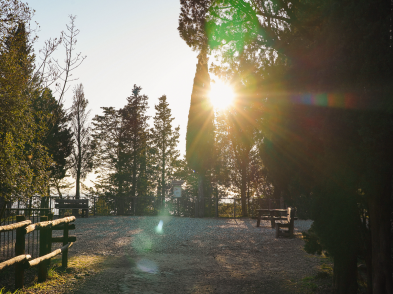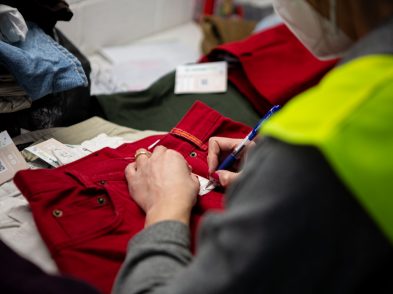
At the end of 2014, Opera di Santa Croce (OSC), with the help of The Florentine and Ares Games, raised $102,426 in a hair-raisingly fast month on Kickstarter to support the much-needed restoration of an important part of a cultural landmark: the loggia of the Pazzi Chapel. Since then, both OSC and The Florentine have been inundated with requests for advice on crowdfunding. As the scaffolding comes down and we prepare for the official inauguration on September 18, 2015, those requests have prompted us to ask ourselves what we did right, where we might have increased our net gain, and what parts of this success were just pure good luck.
Crazy for Pazzi was in no way a pure economic gain, as OSC president Irene Sanesi points out: the ripple effect of the crowdfunding has been hugely positive for the institution’s reputation, both online and off, attracting media attention and additional donors as well as putting the institution into direct contact with numerous potential visitors. Roberto di Meglio of Ares Games also comments on the long-term connection created when ‘donors become part of a community.’ As he observed, ‘This insubstantial reward is often more important for people than the actual physical rewards in a campaign.’
For anyone considering running a crowdfunding, do consider this disclaimer: the entire effort is going to take more time than you think! More than a dozen people worked around the clock for two months to achieve this result—and our work is not over yet. While the effects ripple out well beyond the immediate campaign, so does the work involved, extending over months if not years. And it’s not just a matter of time and energy: you must factor into the budget the transaction fees, paid skills, reward and shipping costs that are subtracted from the gross earnings of any campaign and that affect the net results.
If asked to write a recipe for crowdfunding, I’d say: ‘Add 1 part great content, 2 parts hard work, and 5 spoonfuls of serendipity.’ For Paola Vojnovic, who oversees fundraising and museum outreach at Santa Croce, the Crazy for Pazzi campaign boils down to three main points: inspiration, communication and celebrity endorsement.
Santa Croce is a lovemark for some people, and Florence is a larger lovemark for a lot more people. Using the language of travel storytelling, the Crazy for Pazzi campaign inspired and moved people on different levels. Great videos, photography and in-depth historical information were some ways we did this. We also inspired people on-site with a huge event for local Instagramers and with signage in loco.
The ‘crowd’ in ‘crowdfunding’ depends entirely on communication. When it comes to the digital world, there are ‘right’ and ‘wrong’ ways to do this. Every element needs to be thought through, and it helps to have the advice of experts, but also of a large working group to balance out any bad ideas! Kickstarter and other platforms also have their own set of communicative conventions, so for first-time campaign managers, it’s best to team up with someone who has done it before. Finally, you can never shout about your project loudly enough. Although The Florentine spoke of nothing but for a month in the paper and on social media, Santa Croce posted daily on their channels, and local newspapers and bloggers wrote about and promoted the campaign, at the end, we still encountered people who hadn’t heard about it—but maybe should have.
Vojnovic also believes that the celebrity endorsements behind Crazy for Pazzi helped lend authority to the campaign and drove people to get involved. Architect, art historian and star of a BBC 2 travel series Francesco da Mosto generously volunteered his time and incredible patience to narrate the beautiful video that presented the need to restore the loggia. Towards the end of the campaign, American actor, director and art historian Dr. Peter Weller came to Florence specifically to film an endorsement that provided a much-needed boost.
Another major element is hard teamwork. A successful campaign not only needs a dedicated team, but the team must include people with complementary skills. OSC has deep historical knowledge, technical staff, a social media team and a fund-raising manager, but they recognized the need for Kickstarter experts like Ares Games, who have raised over a million dollars through five campaigns, and the communications staff of The Florentine and its sister company Flod for art direction, writing and promotion to an international readership.
There were some things in Crazy for Pazzi that should have gone wrong, and others that went well by pure chance. Or perhaps it was a miracle. It seemed crazy to launch a campaign right before Christmas, when people’s budgets were on family gifts and holidays. It seemed crazy to talk to strangers on a train, but this actually generated at least two donations. It seemed crazy to ask the stars of a BBC series and the film Robocop to lend a hand, but they showed up. And in the end, some 900 people got involved at every level and became just a bit Crazy for Pazzi themselves.
Donations to restoration projects at Santa Croce continue online at www.crowdfunding.santacroceopera.it







